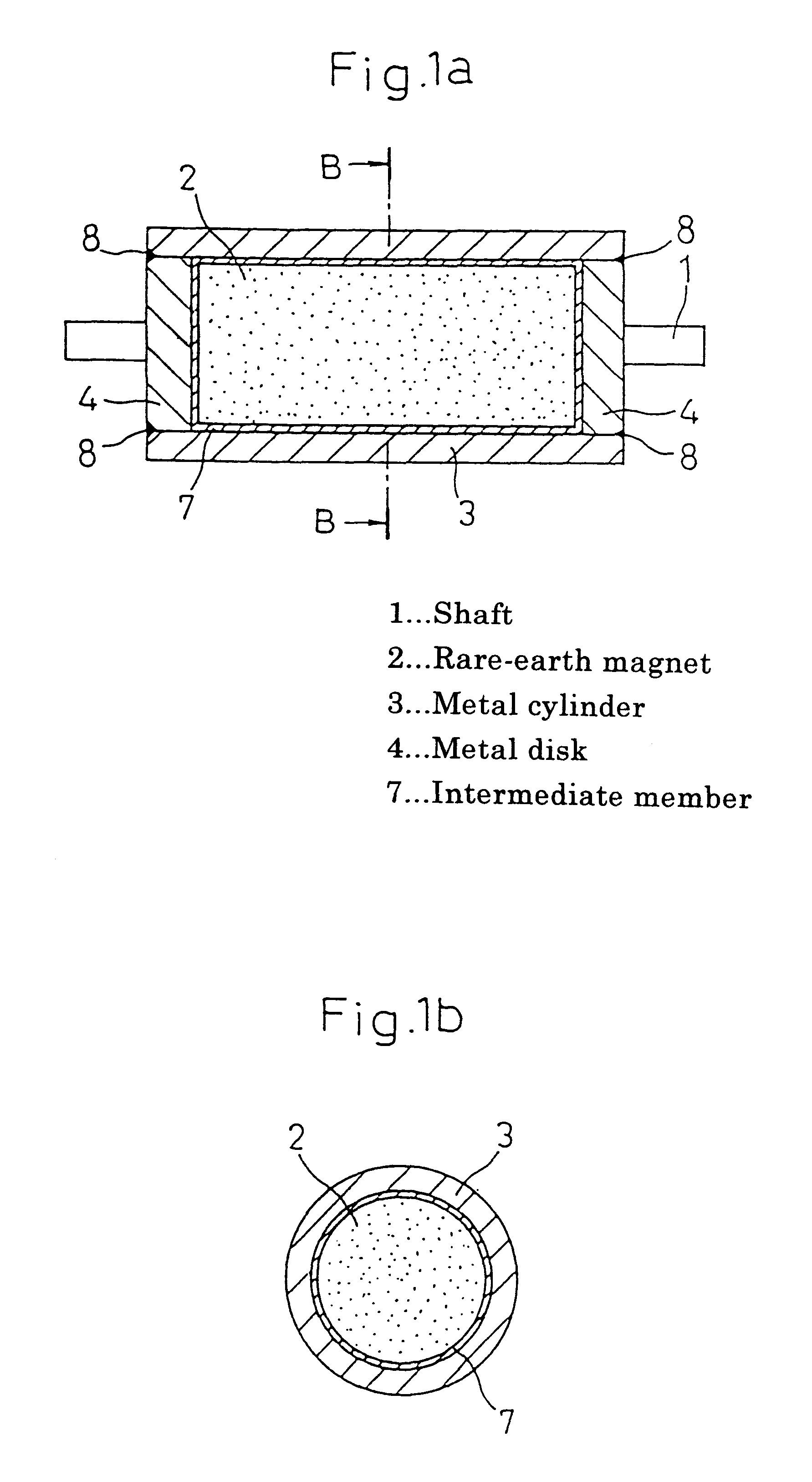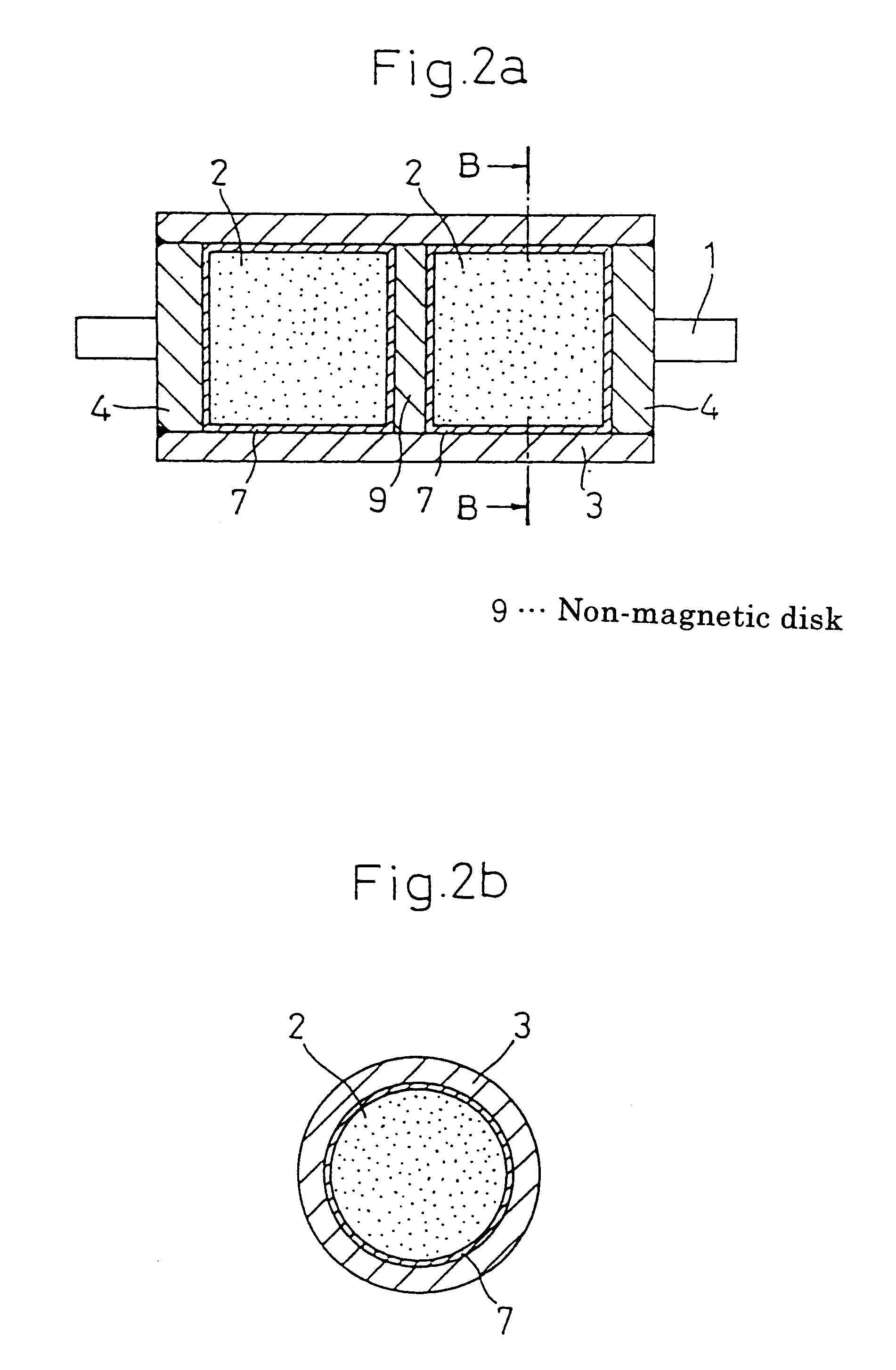Monolithically bonded construct of rare-earth magnet and metal material and method for bonding same
a rare-earth magnet and metal material technology, applied in the direction of magnetic bodies, non-electric welding apparatuses, magnetic circuit shapes/forms/constructions, etc., can solve the problems of inferior strength, bending, torsion, and general brittleness of rare-earth magnets, and achieve the effect of improving the bonding strength between rare-earth magnets
- Summary
- Abstract
- Description
- Claims
- Application Information
AI Technical Summary
Problems solved by technology
Method used
Image
Examples
Embodiment Construction
In the following, examples of the present invention will be explained, based on concrete data. In the present example, a rotor structure sample shown in the above-mentioned FIG. 2 was made, and a solid-phase diffusion bonding experiment was conducted by the HIP treatment in case that the intermediate member was interposed therebetween.
1. [Test Material]
As a test material, a rare-earth magnet 2, a columnar Nd--Fe--B sintered magnet (the above-mentioned NEOMAX-35H) having dimensions of .phi.10.0.times.10 mm under non-magnetized condition was used. A 6Al--4V titanium alloy annealed material having an inner diameter of .phi.10.2 mm, an outer diameter of 16.2 mm, a thickness of 3 mm, and a length of 35 mm was used for a non-magnetic metal cylinder 3. A 6Al--4V titanium alloy disk annealed material having dimensions of .phi.10.1 mm.times.5 mm was used for non-magnetic metal disks 4,4 and a non-magnetic disk 9.
A high melting-point metal thin sheet having a thickness of 50 .mu.m was used as...
PUM
| Property | Measurement | Unit |
|---|---|---|
| Fraction | aaaaa | aaaaa |
| Fraction | aaaaa | aaaaa |
| Time | aaaaa | aaaaa |
Abstract
Description
Claims
Application Information
 Login to View More
Login to View More - R&D
- Intellectual Property
- Life Sciences
- Materials
- Tech Scout
- Unparalleled Data Quality
- Higher Quality Content
- 60% Fewer Hallucinations
Browse by: Latest US Patents, China's latest patents, Technical Efficacy Thesaurus, Application Domain, Technology Topic, Popular Technical Reports.
© 2025 PatSnap. All rights reserved.Legal|Privacy policy|Modern Slavery Act Transparency Statement|Sitemap|About US| Contact US: help@patsnap.com



